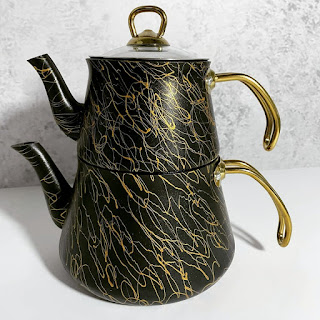I came across @langophilia 's Adrian today, and he had something amazing to share – how historical linguistics work.
Here, he threads together the evolution of a word, from the earliest script of Sumerians, to more contemporary ones. It's a beautiful insight on how the mind of an etymologist works, and how they perceive articles, which may at first seem mundane to untrained eyes.
"In today‘s Kosovo Albanian language use we might often hear the word ‘gjygym’ which translates to teapot. The word was borrowed from Ottoman Turkish during the Ottoman reign over the Balkan Peninsula. In Ottoman Turkish the word was گوگم (güğüm) and it was already a loan from Ancient Greek κουκκούμιον (koukkoúmion)or κούκκουμα (koúkkouma).
An antique "gjygym". For Hindi/Sanskrit speakers, you may know this as a "gagri".
The Ancient Greeks also took the word from Classical Syriac ܩܘܩܡܐ (qūqəmā) which meant pot in their language. However, this was also a loan from Imperial Aramaic 𐡒𐡅𐡒𐡌 (qwqm), which too, was borrowed from Akkadian 𒂁𒆪𒆪𒁍 (kukkubu, quqquba), referring to a smaller container used as an alabastron, libation jar, or drinking flask.
This word is in turn suspected to have been taken or developed from the Sumerian word 𒂁𒃻𒋫𒆸 (gugguru), which was a tall earthen vessel with a narrow opening."

No comments:
Post a Comment